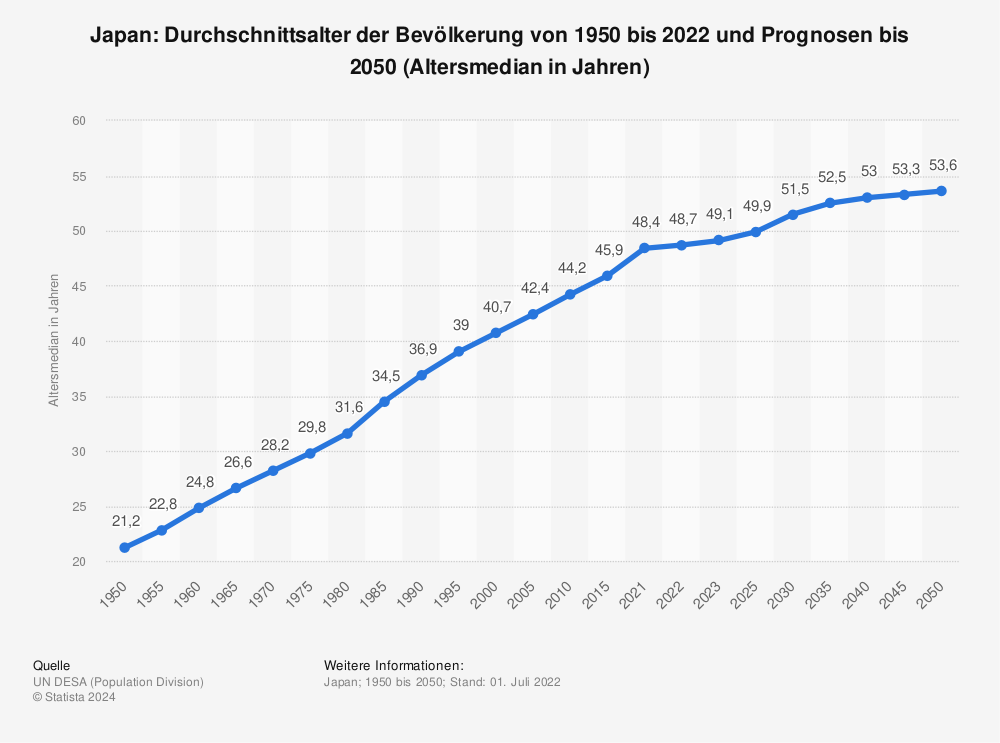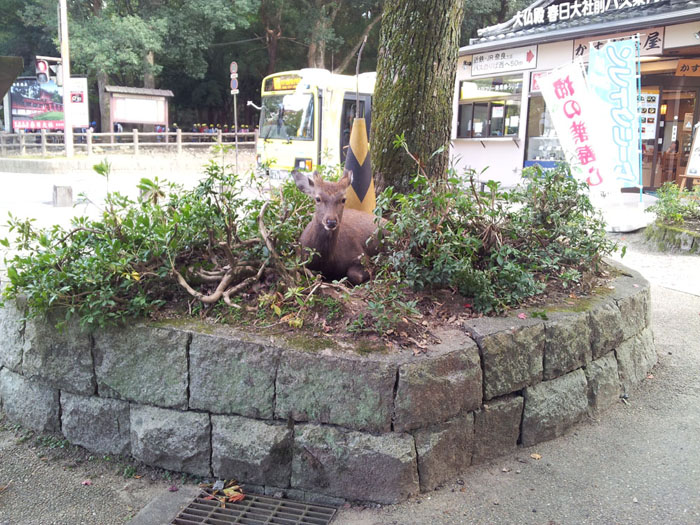Japans aging population and its task
Japans aging population and its task
A while ago I researched intensively the current and ageing Japanese population. Similar to other industrialized countries, Japan struggles with its ageing population. Questions like “How will the pension be paid in the future?”, “Should new jobs for old people be introduced?” and “How will the insurance and nursing system look like?” are frequently discussed.
Historical background and demographic change
This paragraph is based on the graphic population pyramid on this website: http://populationpyramid.net/japan/2016/. Please have a look before you read further.
Japan surrendered in 1945, bringing the end of World War II. The country was democratized and the economy grew. The end of the war and the political changes, as well as economic growth, led to a baby-boom. The main reason for the growth of the population was the end of the war, though.
In 1948, the rights of men and women changed significantly. Both of them are now allowed to make their own decisions regarding marriage partner and job, whereas that was not the case before. Also, it became possible to divorce and to apply for custody rights. The size of the families became smaller, because women had access to the business world and to the education system.
Between 1950 and 1960 were many natural disasters and the war against Korea which probably caused a decrease in number of offspring.
The economy grew again with a new constitution and a peace agreement, which led to another baby-boom era between 1960 and 1970. Living standards improved rapidly, as did the position of women in society around 1980. Because of increased life expectancy and the implementation of the small families, starting a career as a woman became much easier.
Unfortunately, the economy collapsed in 1991, which lead to a financial and to a political crisis. People marry later than in the past and give priority to their careers. The first clear change in the demography of Japan happened in 2005. It’s the first time when more people died than offspring were born.
Experts predict that the population in 2050 will be smaller than in 1950, if the fertility and migration rates stay the same. In addition, more than one third of the population will then be over 65 years old.

Mehr Statistiken finden Sie bei Statista
Current situation
The number of inhabitants of Japan has been decreasing since 2008. In 2005, 127.78 million people lived in the country. The number grew to 128.05 million people between 2008 and 2010, but it then decreased to 126.73 million. Japan used to be one of the ten countries with the biggest populations, but it has already changed.
The low fertility rate and low immigration have caused the population to shrink. The fertility rate between 2003 and 2013 was between 1.29 and 1.43. Japan has a very restricted immigration policy, which can’t help to balance the deficit.
According to experts the fertility rate is low because of the trend of having small families, late marriage, careers, the expensive educational system for children and the small apartments. The average age of the population is 46.5 years and 26% of the people are over 65 years old. However the life expectation is similar to other industrialized nations: 83.33.

Mehr Statistiken finden Sie bei Statista
Possible solutions for the demographical task
The Japanese government is already trying to change the immigration policy. Only 2% of the people living in Japan are foreigners. The integration of them into the business world needs to become easier. Fields like education, science, development and health care, especially, could benefit from immigration.
Equality is still a big topic in Japan. It is still difficult for mothers to find a new job after birth. In addition, many children are still waiting for a place in a day care facility. Starting a family is especially difficult in big cities like Tokyo, where the apartments are small, commuting to the work place takes a long time and where almost no help is offered. Unfortunately, women are still paid less than man, which will be changed in a tax reform. The situation for mothers should become better when more part-time and flexible jobs are introduced.
Similar to the lack of day care, there is also a lack of health care institutions for old people. Many Japanese people take care of their parents by themselves instead of going to work. This will be changed by introducing a better health care system. Since the business world in Japan is very strict and many people become ill, better jobs for disabled people and people over 55 must be created.
According to politicians, the pension system and the whole health care system are going change in 2016. The goal is to have more of the budget available for poorer people.
Thank you for your support! By sharing this article with your friends, post your ideas in the comment and your donation, this blog is growing!
Follow on Instagram, or sign up to the newsletter to stay up to date!


